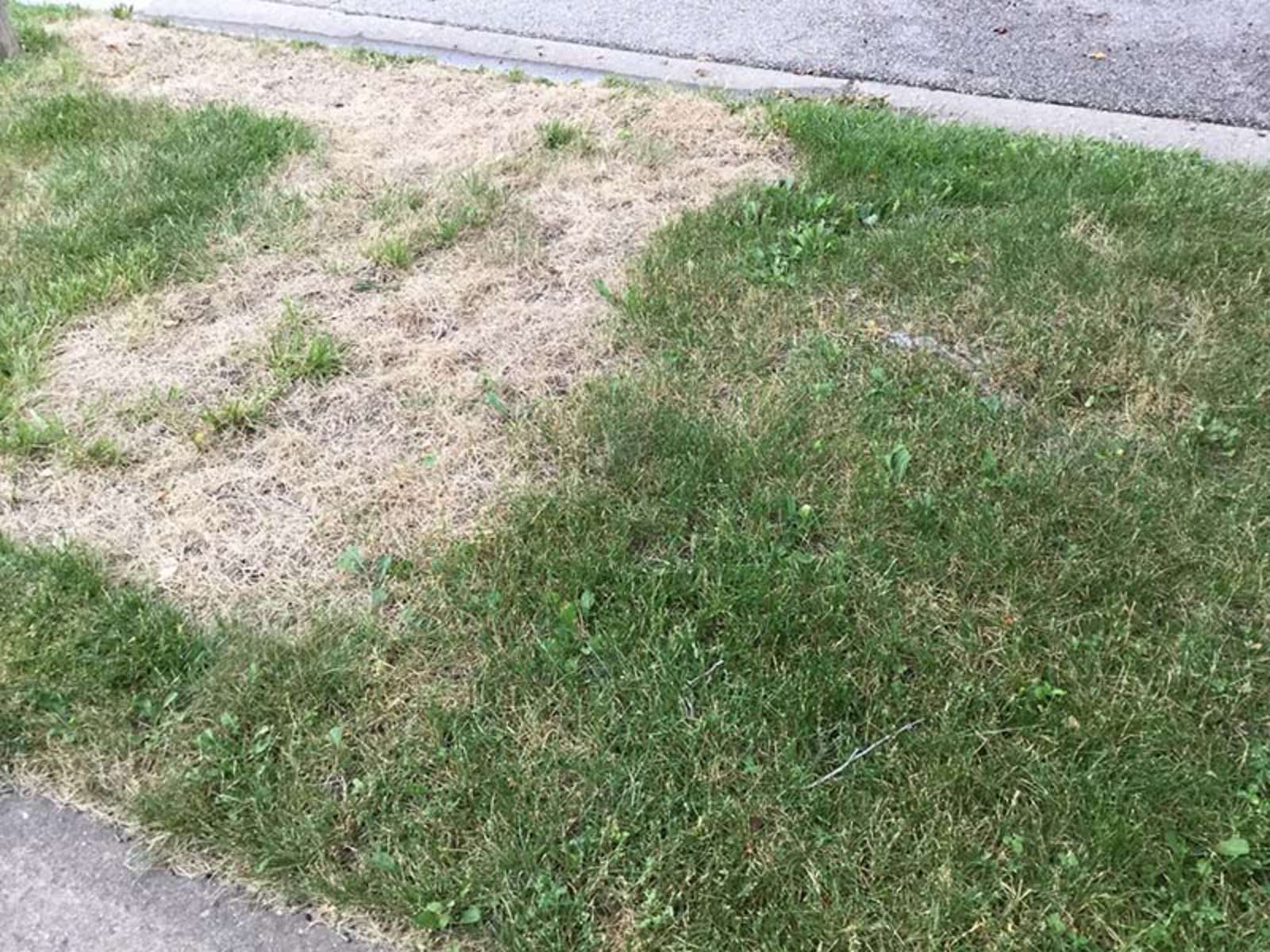Picture of the Week
May 30, 2022
Fertilizer Application, Don't Get Burned!
John Orick, Purdue Master Gardener State Coordinator, Department of Horticulture and Landscape Architecture
A healthy lawn requires supplemental nutrients delivered through fertilizer applications to maintain growth. Applying fertilizer evenly and at the appropriate rate is critical for an effective application. The photo in this article shows turf that has been damaged by a fertilizer spill. Mineral fertilizers are salt based products. When a mineral fertilizer is spilled on turf, it causes “burning” of the plants because the high salt concentration draws water out of plant cells causing them to die. Likely, the only way to repair the damage depicted in this photo is to reseed or sod the area. But, there are effective ways to prevent this damage and mitigate a fertilizer spill on turf.
Here are some important tips:
- Become familiar with how to operate your fertilizer spreader. When using a spreader to make a fertilizer application, begin walking before you engage the lever to release the product for distribution. Consider a short “practice run” with your spreader before filling the hopper with fertilizer to become more familiar with how the spreader operates, your walking speed, and the terrain.
- Select the proper setting for the fertilizer product and recommended rate of nitrogen for the application. The fertilizer label and/or your spreader operator manual may be helpful in determining the appropriate setting for your spreader model. Be sure to always read the fertilizer label!
- If fertilizer is spilled on turf or some other surface. Use a shop vacuum or some other method to pick up as much fertilizer as possible. If spilled on turf, flush the area with water after vacuuming to dilute the remaining product. Watch the area to see if the spill damages the turf. Fertilizer removed from the area can be returned to the original bag or the spreader hopper for application to the lawn at a later time.
For more information on proper lawn fertilization, seeding, and other lawn care practices, visit www.turf.purdue.edu
Resources:
Fertilizing Established Cool-season Lawns: Maximizing Turf Health with Environmentally Responsible Programs (AY-22-W), https://www.extension.purdue.edu/extmedia/AY/AY-22-W.pdf
Purdue Turf Fertilizer Calculator https://turf.purdue.edu/fertilizerCalculator/index.html
Establishing Turfgrass Areas from Seed (AY-3-W) https://www.extension.purdue.edu/extmedia/AY/AY-3-W.pdf
Establishing a Lawn from Sod (AY-28-W) https://www.extension.purdue.edu/extmedia/AY/AY-28-W.pdf



